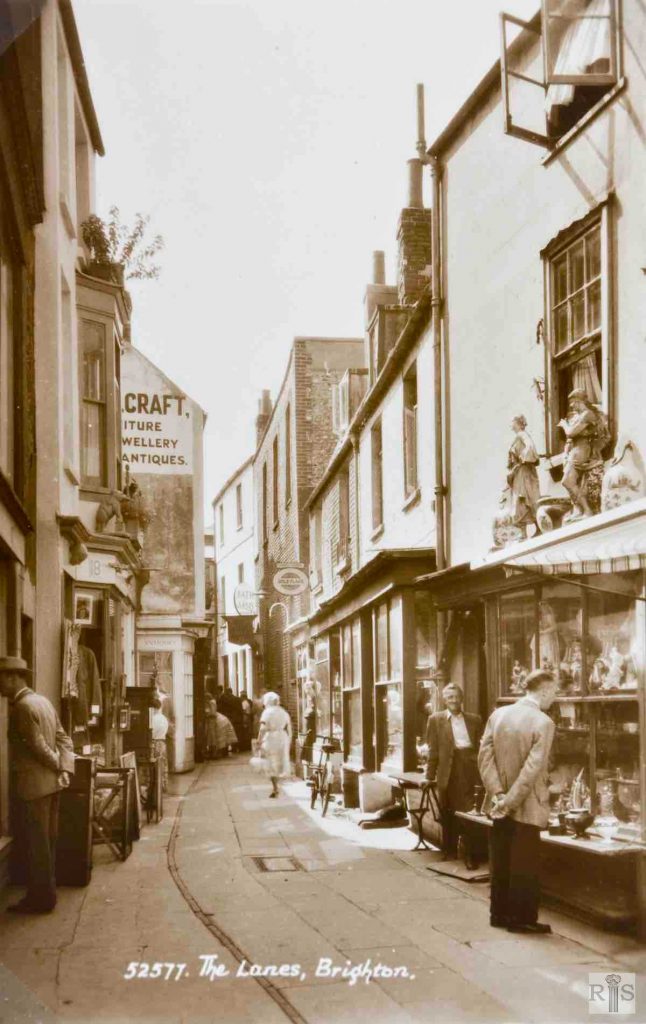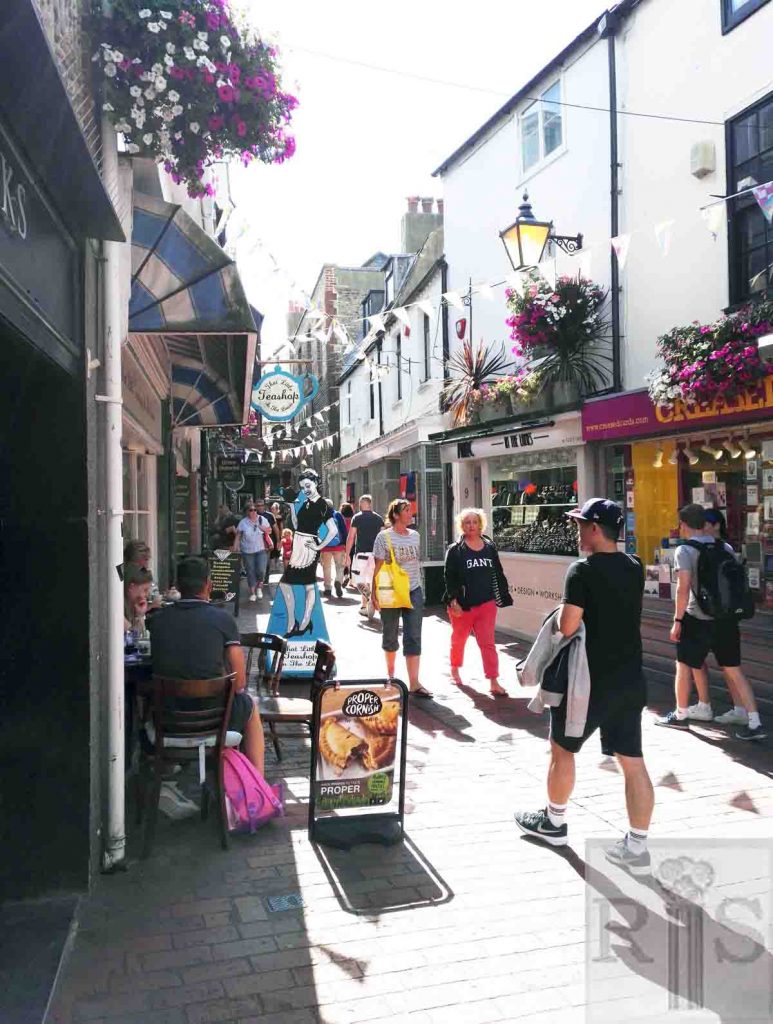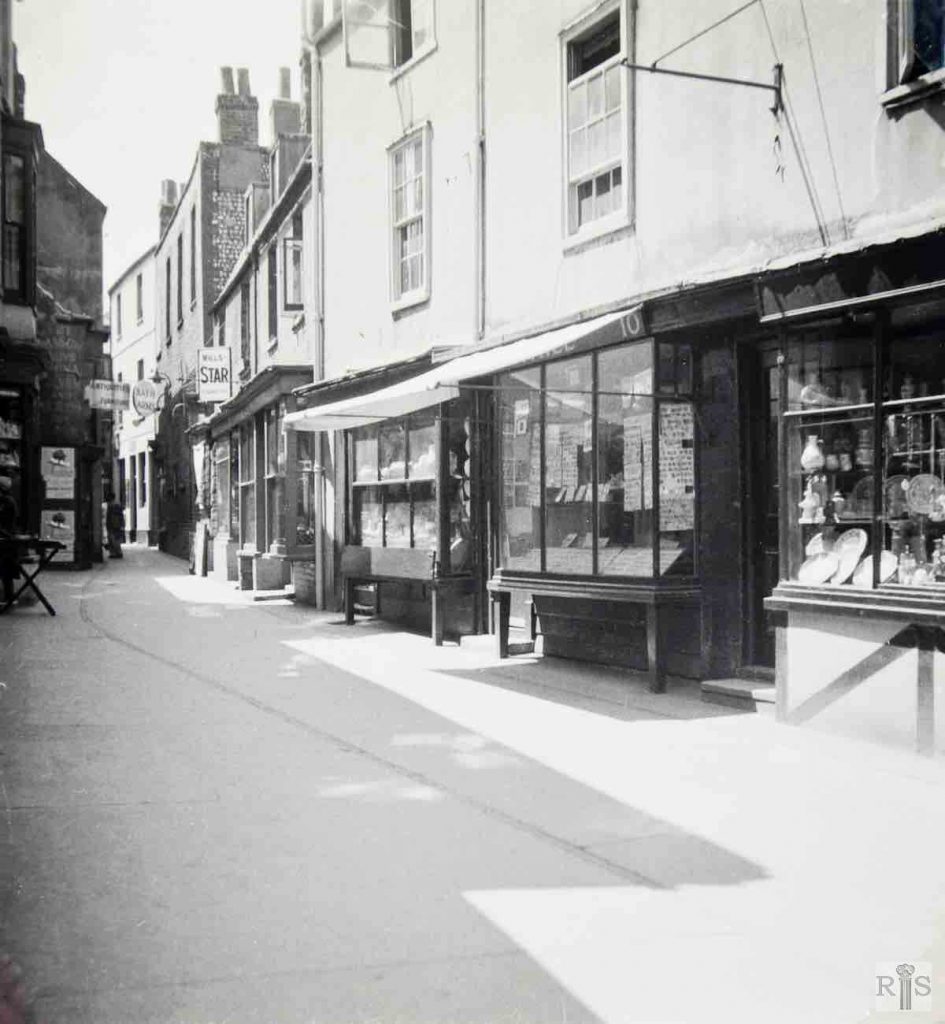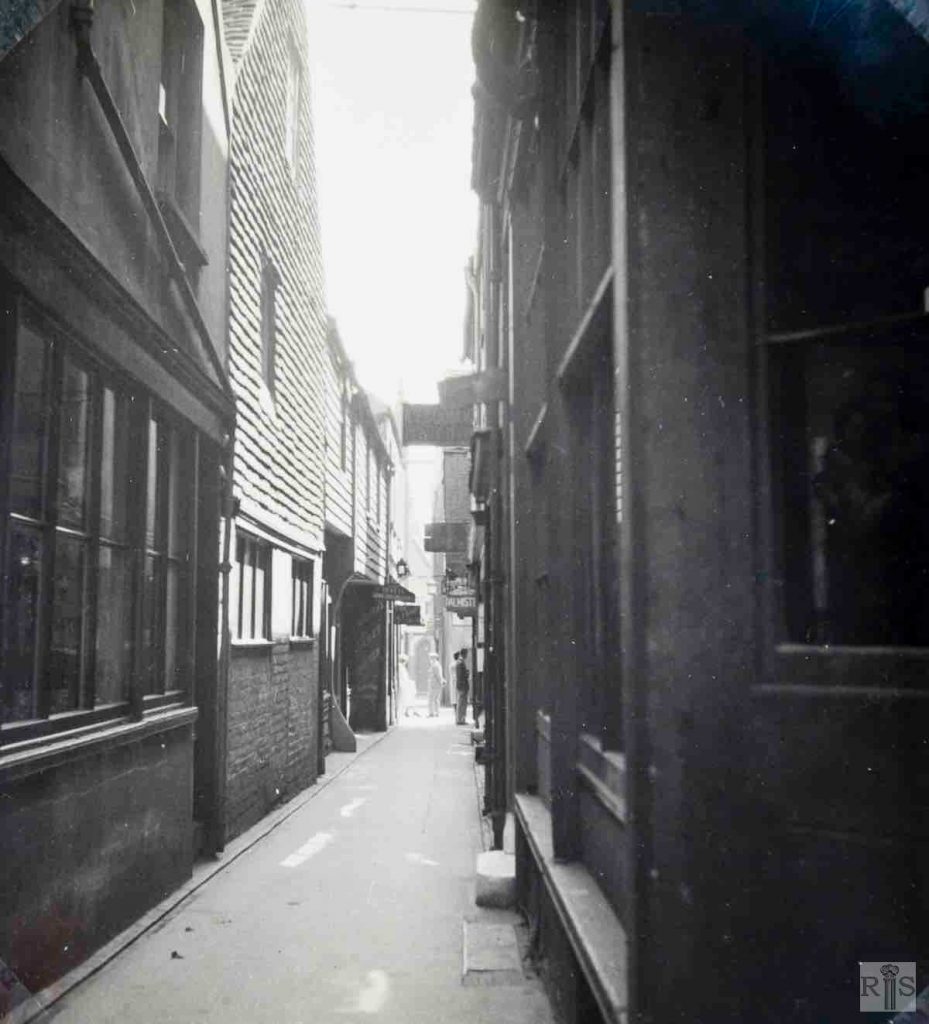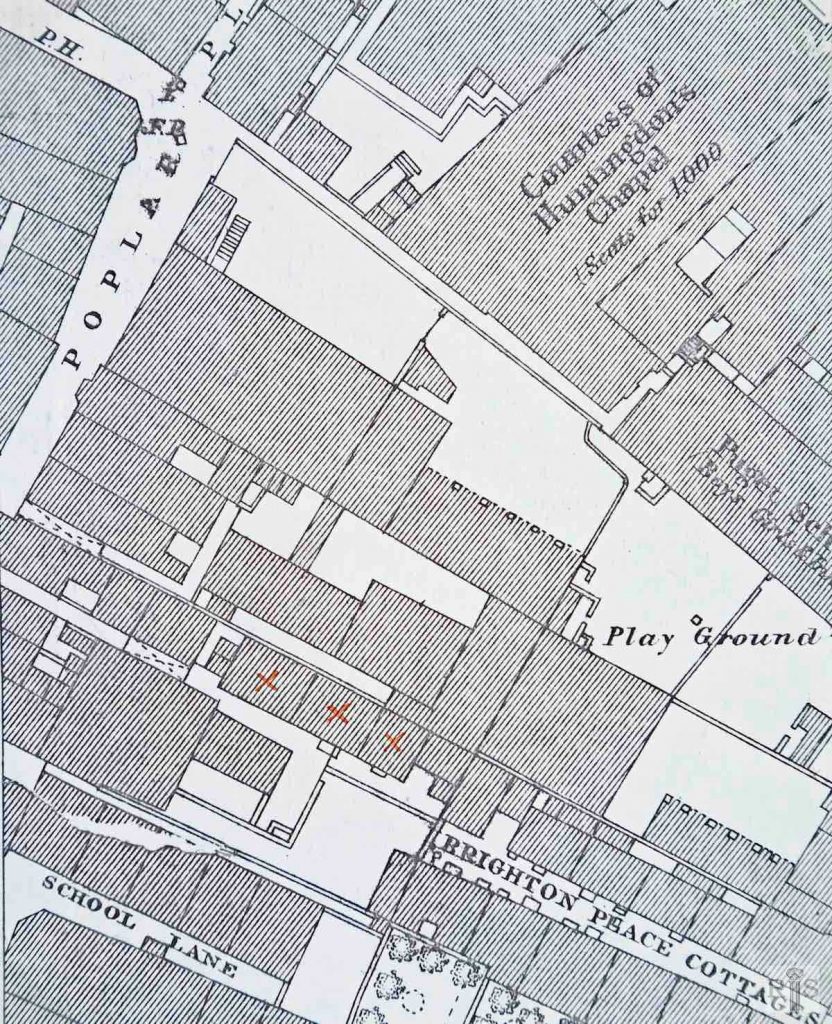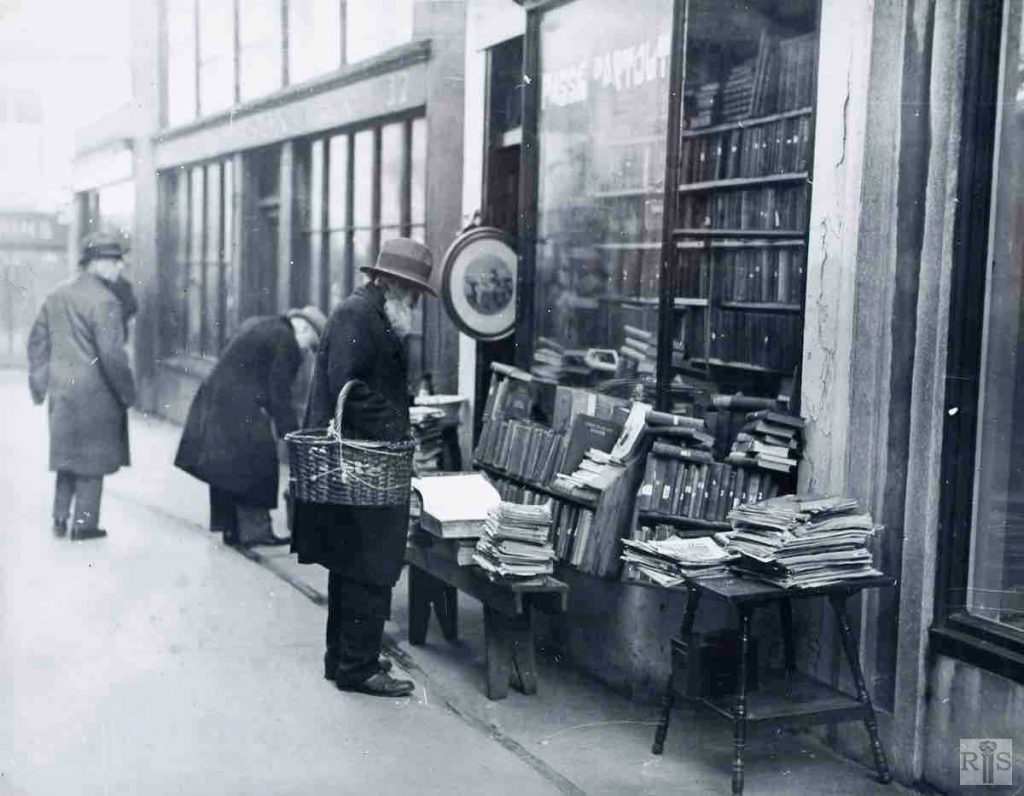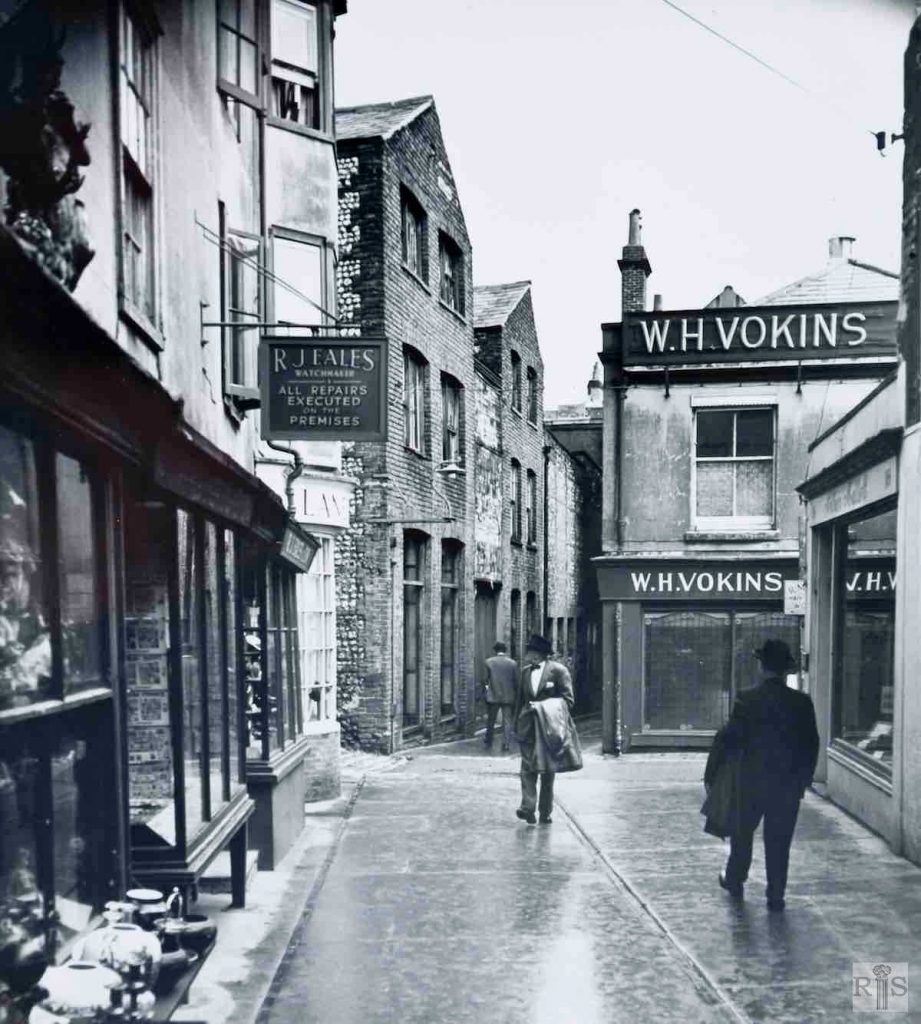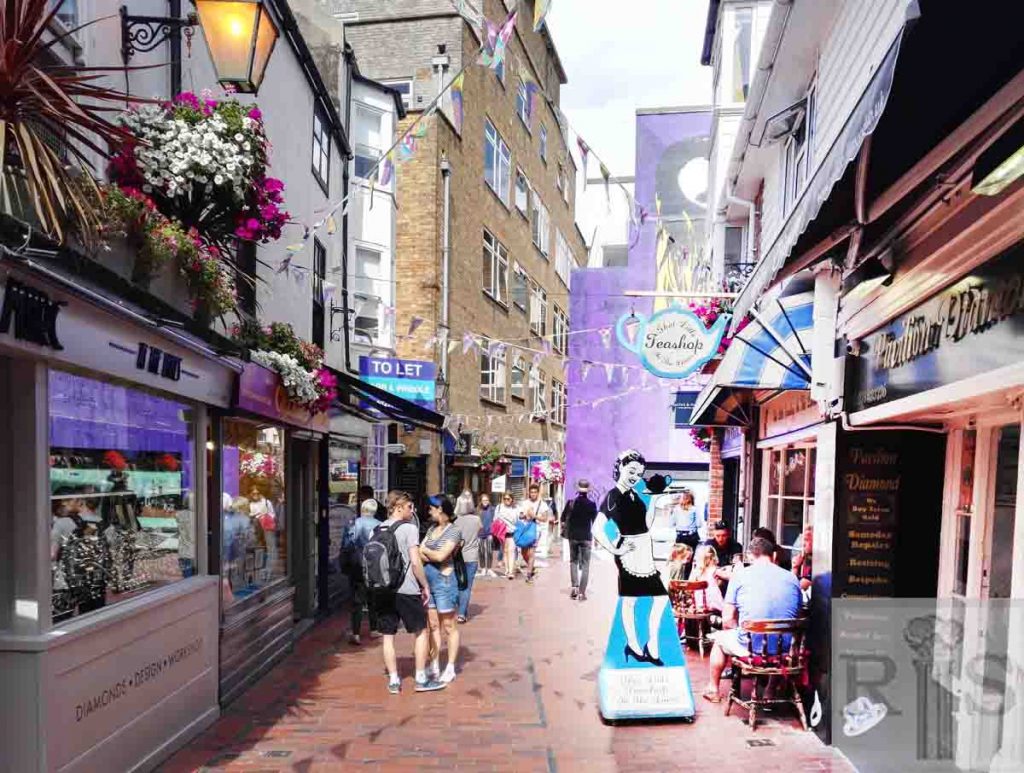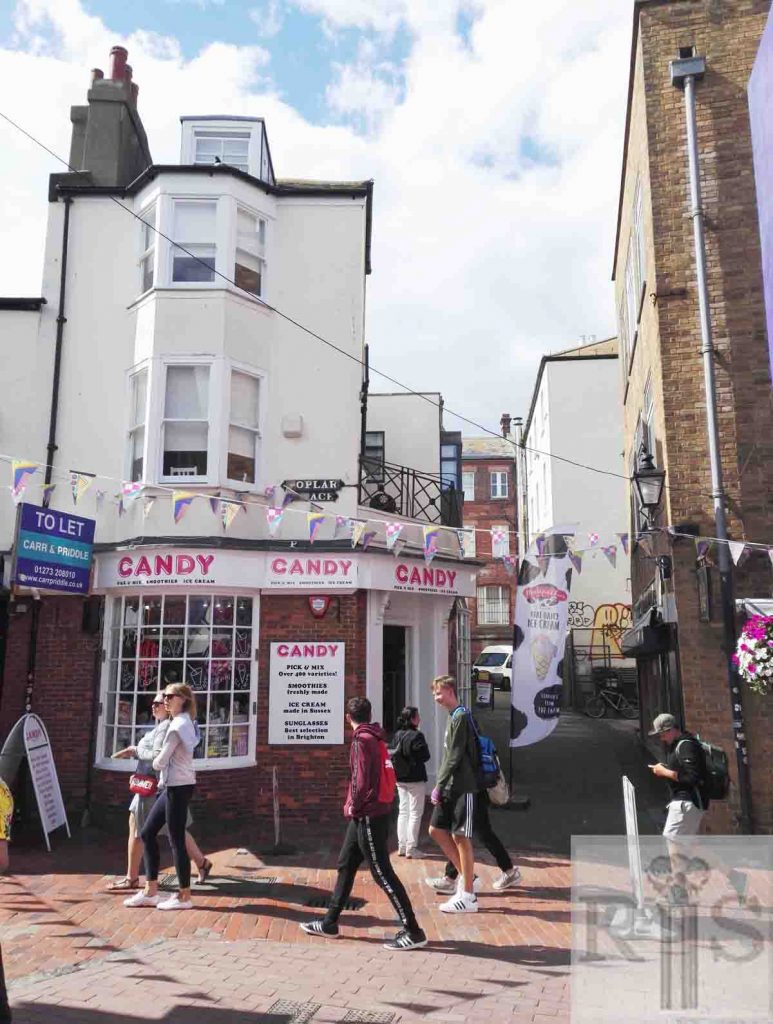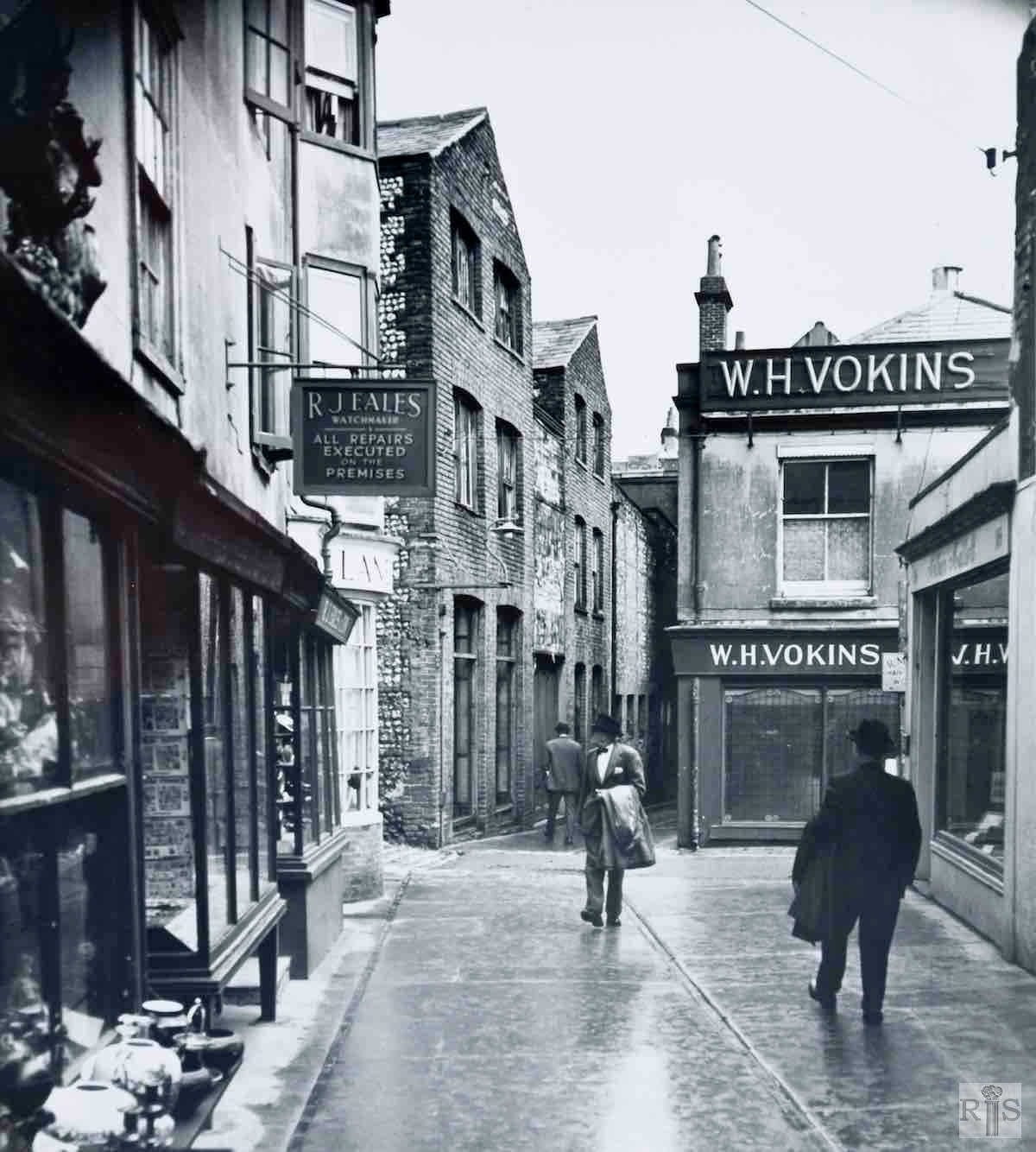
James Gray: For the benefit of future Brightonians I have included a postcard [jgc_09_021] and a photostat copy [jgc_09_022, below] of part of the Ordnance Survey of 1875. The entrance [to a lane with just three tiny cottages from the 1780s called Poplar Row] was by the passage by the side of the wall bearing the letters CRAFT part of the name S Charlcraft. On the map the cottages are those three buildings marked with red crosses. Note the two walls at right angles in both the plan and the photograph. jgc_09_021
2019: The Lanes retains its important role for visitors. This view has changed very little but the old cottages of Poplar Row were demolished in the 1930s and the area redeveloped as Brighton Square in the 1960s. (Photographer: Simon Cooper)
James Gray: A view of Brighton’s ageless Lanes in 1939. Here looking south from Poplar Place. jgc_09_017
James Gray: A view of Brighton’s ageless Lanes in 1939. Here looking east along Meeting House Lane. jgc_09_018
James Gray: See caption for map of 1875 with jgc_09_021 above. jgc_09_022
James Gray: Nos 16 – 18, on the east side in 1934. The view is down the hill towards North Street. The owner of the second-hand bookshop was Miss C Sandilands. Additional Information: Bearded gentleman browser. jgc_09_023
2019: In both jgc_09_016 and jgc_09_023, a rear shop window of Vokins store can be seen. Some departments of Vokins store fronted on to North Street at Nos 21-23. The building now houses Habitat. (Photographer: Simon Cooper)
James Gray: Meeting House Lane, looking north in 1958, before alterations at the rear of Davis’s old premises in North Street. Additional Information: W H Vokins, R J Eales. jgc_09_016
2019: The business of W H Vokins no longer exists and the old warehouse buildings have been replaced by uninspiring post-war office buildings. Fortunately, at street level, life is now bustling. (Photographer: Simon Cooper)
James Gray: View of Poplar Place, the Model House Tavern and Clarence Yard in 1923. The North Street end of Meeting House Lane was at one time known as Poplar Place, because of six tall poplar trees that were cut down in 1872. One tree stood exactly opposite the tavern. Although the houses were numbered in Meeting House Lane as far back as the 1850s, the name Poplar Place persisted for many years to come. The tavern was so named after the Model Dwellings, artisans’ flats built in the 1850s between the back of the Clarence Hotel and Ship Street Court and later absorbed into the Post Office buildings. jgc_09_019
2019: This image is still recognisable today. The Model House Tavern building still retains its distinctive side entrance, though it is no longer a public house. (Photographer: Simon Cooper)
